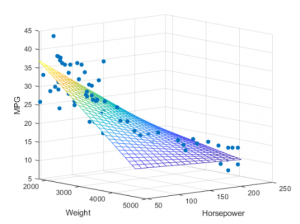
In this post, you will learn about the scenario in which you may NOT want to use F-Statistics for doing the hypothesis testing on whether there is a relationship between response and predictor variables in the multilinear regression model. Multilinear regression is a machine learning / statistical learning method which is used to predict the quantitative response variable and also understand/infer the relationship between the response and multiple predictor variables. We will look into the following topics:
- Background
- When not to use F-Statistics for Multilinear Regression Model
Background
F-statistics is used in hypothesis testing for determining whether there is a relationship between response and predictor variables in multilinear regression models. Let’s consider the following multilinear regression model:
[latex]Y = \beta_0 + \beta_1X_1 + \beta_2X_2 + \beta_3X_3 + … + \beta_pX_p + \epsilon[/latex]
In the above equation, Y is the response variable, [latex]\beta_0, …, \beta_p[/latex] are coefficients and [latex]\epsilon[/latex] is the error term.
The null hypothesis can be stated as the following:
[latex]H_0: \beta_1 = \beta_2 = … = \beta_p = 0[/latex]
The alternate hypothesis can be stated as the following:
At least one of the coefficients, [latex]\beta_j[/latex] is not equal to zero
In order to reject or fail to reject the above mentioned null hypothesis, F-Statistics is used. The following represents the formula for F-Statistics:
F Value = [latex]\frac{\frac{(TSS – RSS)}{p}}{\frac{RSS}{N – P – 1}}[/latex]
In the above equation, TSS is total sum of squares [latex](Y – \bar{Y})^2[/latex], RSS is Residual sum of Squares [latex](Y – \hat{Y})^2[/latex], N is number of observations and P is number of parameters.
Based on the above, the value of F-statistics could be calculated and the related p-value could, then, be calculated. In case, the value of p-value is less than 0.05, one could reject the null hypothesis. This essentially means that there is a relationship between response and one or more predictor variables and the multilinear regression model holds good.
However, the question arises as to whether F-statistics could always be used?
When not to use F-Statistics for Multilinear Regression Model
The F-statistics could be used to establish the relationship between response and predictor variables in a multilinear regression model when the value of P (number of parameters) is relatively small, small enough compared to N.
However, when the number of parameters (features) is larger than N (the number of observations), it would be difficult to fit the regression model. Thus, F-statistics could not be used.
Summary
F-statistics could be used to perform hypothesis testing of whether there is a relationship between response and the predictor variables in a multilinear regression model. If the number of parameters (features) is smaller in comparison to the number of observations, one could go about using F-statistics to perform hypothesis testing. However, in case, the number of parameters is much larger than the number of observations, F-statistics could not be used as one won’t be able to fit a multilinear regression model in the first place.
- Mathematics Topics for Machine Learning Beginners - July 6, 2025
- Questions to Ask When Thinking Like a Product Leader - July 3, 2025
- Three Approaches to Creating AI Agents: Code Examples - June 27, 2025
I found it very helpful. However the differences are not too understandable for me